33 Interesting Facts About the Most Famous Engineers & Inventors
Here are 33 amazing facts you might have never heard about the greatest inventors and engineers.
Inventors and scientists have always been seen as eccentric, nerdy and boring fellows, but they too have a life as wacky and fancy as any other human. They make mistakes, they explore the world, they have their quirks and they can be funny as anything.
We have compiled, here, amazing facts and stories from the life of some of the greatest inventors and engineers from all over the world. Stay curious and enjoy!
1. Richard Feynman Cracked Vaults

Feynman may be the most popular scientist of the 20th century. During his involvement in the Manhattan Project at Los Álmos, he started learning to crack the safe vaults for amusement. And soon he was an expert at safecracking, as the genius he was.
He cracked a vault containing America’s nuclear secrets and thus warned the authorities to tighten the security.
2. Werner Forssmann Took Science to Heart
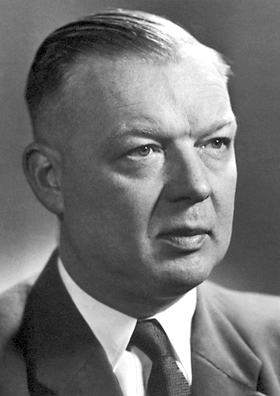
Forssmann believed that human cardiac catheterization was possible but the medical world, at that time, believed the contrary.
[see-also]
In order to prove his point, he decided to perform the procedure on himself.
He inserted a ureteric catheter in his vein all the way to his heart, all by himself.
With catheter still in his body, he moved to the X-ray department and got the X-ray done with the catheter in his heart.
The whole stunt was life-threatening but Forssmann opened the way for catheterization with this feat. He later received Nobel Prize for his accomplishment.
3. Barry Marshall Gave Himself an Ulcer for Science

Ulcers were the most common stomach malignancy in the last quarter of the 20th century. The medical professionals held the view that stress was the cause of this disease, but Barry Marshall had enough evidence to prove a bacteria was at the root of the problem.
His views were dismissed by the community and he could not run his experiment on lab mice as the bacteria infected only the primates. So, he chose himself to be the guinea pig and drank a culture of the bacteria mixed in a broth.
As expected, he developed the disease and subsequently cured it with antibiotics. This discovery led him to share Nobel Prize for medicine in 2005.
4. Leo Fender Manufactured Best Guitars But Couldn’t Play It

Leo Fender revolutionized the music instrument industry with Telecaster and Stratocaster. The man who manufactured the best electric guitars, ironically, could not play the guitar.
He was behind most of the innovations and inventions by Fender Electric Instrument Manufacturing, but the inventor didn’t know how to play the guitar. Fender was interested in electronics and he was an engineer by trade.
He started his career with radio repair and amplification systems.
5. James Watson Auctioned his Nobel Prize

This may not be the interesting fact you want to read, but it certainly is the harshest truth about James Watson. The great scientist who discovered the structure of the DNA, supposedly the biggest discovery of the 20th century, auctioned his Nobel Prize.
Watson shared the 1962 Nobel for medicine with Francis Crick. Watson was ostracized by the academic community after he made a remark suggesting race and intelligence are linked. The eminent biologist faced the opposition of his peers and his income plummeted as a result of the controversy.
However, the billionaire who bought the medal returned it to the scientist to honor his academic contribution.
6. Niels Bohr Got a House with Unlimited Beer Supply

Niels Bohr is a national hero in Denmark. So, when he won the 1922 Physics Nobel Prize for his contribution in the investigation of the atomic structure and radiation, he was gifted a house by Carlsberg, next to a brewery.
But it was not an ordinary house. Carlsberg put a pipeline to the house directly from the brewery with an unlimited supply of the premium beer.
Best way to honor a physicist, indeed.
7. Karl Schwarzschild Solved the First Equation of Relativity Theory While Fighting in WWII
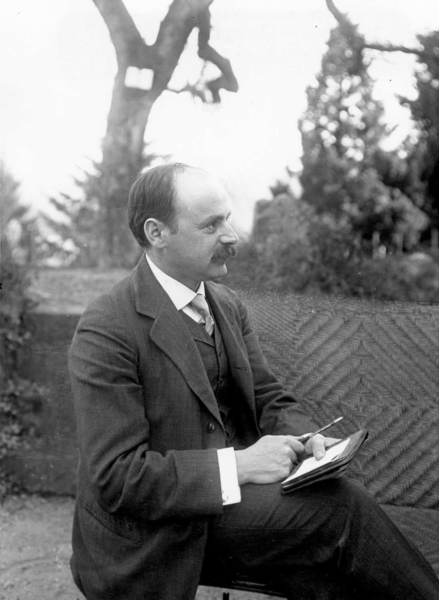
Karl Schwarzschild solved the first equation of Einstein’s theory of relativity the same year it was proposed and guess what, he achieved this heroic feat while fighting in the World War II. Karl was a distinguished physicist and 40 years old when war broke out.
Still, he volunteered for the German Army and rose to the rank of Lieutenant. He used to study papers and solve equations in trenches when he was not fighting.
He is also credited with a major contribution in electrodynamics.
8. Isaac Newton was Also Made Warden of the Royal Mint

In addition to his studies in the field of mechanics, optics, calculus, etc., Newton was a devout theologian, alchemist, and a statesman. Before being selected as an M.P. and being knighted, Newton was made Warden of the Royal Mint in 1969.
He was entrusted with enforcing the law against counterfeiting. He chose this work to face new challenges and he got a really tough one.
Forgers were operating in the realm at a large scale and Newton had to employ tough measures against them.
9. Paul Dirac Preferred Keeping Quiet

Paul Dirac is well-known for his contribution to physics, but very few are aware of his personal life. He was one of the strangest men as described in his biography.
Paul was a quiet guy and seldom uttered more words than needed. He kept himself away from the limelight. Once, Richard Feynman made a bet that he could keep quiet longer than Dirac.
After a long time, when Feynman told Dirac about the bet, he simply smiled and said, “You lost.”
10. Nikola Tesla Loved Afternoon Naps

Tesla exhibited signs of maniac creativity. He was in so much love with his work that he often forgot to sleep and eat.
Tesla used to sleep for only 2-3 hours a day. He used to take multiple short naps instead of long sleeping hours.
This method is now known as polyphasic sleep and many people follow it and reap its benefit.
11. Thomas Edison is Also Responsible for Tattoo Pen

Thomas Edison, the inventor of the electric light bulb, motion picture camera, and phonograph, was also responsible for the creation of the tattoo pen.
It was patented under the title Stencil-Pens in Newark, New Jersey, in 1876. It was originally intended to be a duplicate device, but Samuel O’Reilly realized in 1891 could be modified and used on skin.
12. Gustave Eiffel Also Designed the Structure of Statue of Liberty

Alexandre-Gustave Eiffel is known worldwide as the architect of the Eiffel Tower in Paris, but only a few know that he designed the internal structure or the framework of the Statue of Liberty as well.
He was hired as the replacement for the initial designer Eugène Viollet-le-Duc, who passed away in the middle of the development.
13. Alexander Graham Bell Silenced Every Phone in North America

Graham Bell died on August 2, 1922 in Nova Scotia. It was a great loss for the world to lose such a visionary. All sort of gestures to honor him looked trivial before his stature.
The nation decided to hold a minute’s silence for the deceased as is customary. But this time it was no ordinary silence. Every phone in North America was silenced for a minute in homage to the man who invented it.
14. John Logie Baird Developed Mechanical TV from Household Items

Baird was living in poverty when he started to give shape to his idea of the world’s first mechanical television. He carried out the development work in the attic of his house.
To the disbelief of many, he used many household items in his creation as sophisticated equipment were expensive for him. Some of the items he used include seal wax, bicycle lights, darning needles, etc.
15. Mikhail Kalashnikov Never Cashed in on the Most Popular Assault Rifle
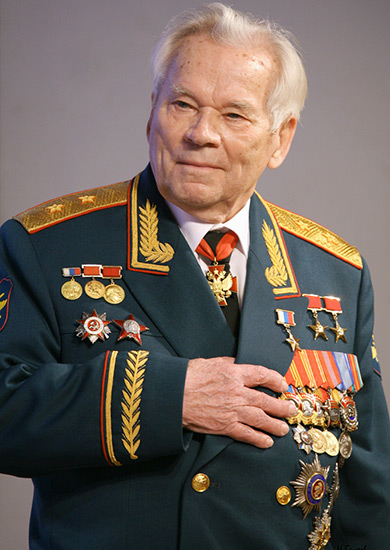
Mikhail Kalashnikov’s brainchild AK-47 is not just the most popular assault rifle of all times but also one of the most selling weapon. It has been employed in various wars and it is the weapon of choice for the army in China, Egypt, Syria and 50 other countries.
Despite these huge sales, Kalashnikov never cashed in on AK-47. He said that his creation was an offering in the service of the nation and not meant for revenue earning.
16. Percy Spencer and the Accident that Gave us the Microwave
If we tell you that microwave oven was invented by accident, you won’t believe it. How come such a sophisticated machine was invented by accident?
Percy Spencer was a pioneer of radar technology. While working with radars, he observed the candy in his pocket melted. On further investigation, he achieved positive results with other food items as well. And thus, the microwave oven was born in 1946.
17. Horace Wells Died Without Realizing that His Invention Was Already Acknowledged

Horace Wells championed the use of nitrous oxide (laughing gas) as anesthesia for dental operations and other treatments. However, his first public demonstration of the method at Massachusetts General Hospital failed horribly.
Consequently, he was ridiculed. Horace could not bear it and committed suicide in 1948.
He died unaware of the fact that Paris Medical Society had acknowledged him as the inventor of anesthesia just a few days before his death.
18. Tycho Brahe Died While Exhibiting Good Social Etiquette

Danish astronomer Tycho Brahe was a party animal. He used to host parties after parties on his own island. At the same time, he took great care in exhibiting good social etiquette.
While attending a banquet in Paris, he stayed at the table while he needed to pee, for the sake of etiquette.
This later led to kidney infection and Brahe died 11 days later in 1601.
19. André-Marie Ampère, the Absent-Minded Genius

Ampère was a genius but there are some incidents which show his absent-mindedness as well. When Ampère returned to his seat after addressing a gathering of scientists at the Institut de France, he found it occupied by a stranger.
Ampère soon found the stranger was none other than Napoleon Bonaparte. Napoleon was amused by Ampère’s innocence and invited him to dinner the next day.
And you won’t believe it, Ampère forgot the invitation to dinner.
20. Stephen Hawking’s DNA Sequence is Safe in ISS

The DNA sequence of Stephen Hawking is stored in the fully digitized format in a hard disk, known as Immortality Drive, in International Space Station. He was among a select group of humans and the only physicist to have his DNA immortalized.
The idea for the drive was conceived to leave the human footprint in case of a catastrophe. The drive also contains a digitized copy of George’s Secret Key to the Universe, a book written by Stephen Hawking and his daughter.
21. Sigmund Freud Considered Cocaine as a Therapeutic Substance

The iconic image of Freud holding a cigar to his mouth tells us enough about his love for the cigars, but he had another pet vice. Freud was introduced to cocaine in the 1880s and he really liked it.
He found it beneficial to his health and claimed a rejuvenated self. He advocated its use among his peers and even published a paper titled “On Cocaine” wherein he praised the drug.
The news of cocaine addiction and death by its overdose refrained him from publicly advocating it. However, he continued to use it for a long time as a therapeutic substance.
22. Marie Curie’s Old Notebooks are Still Radioactive

Marie Curie made some astonishing advancements in the field of radioactivity, but she was not aware of the harmful effects of the radiations. Her long-term exposure to radiation killed her.
The level of contamination is seriously mind-blowing. Her century-old notebooks are still radioactive and so are her other belongings.
The laboratory where she worked has been shut down and been kept away from human reach.
23. Henry Ford’s Ideal City Fordlandia

Ford as a visionary and philanthropist is as great as a successful industrialist. He tried to set up a utopia, the Fordlandia in line with his ideals in the thick Amazon forest.
He founded the city (an independent state, to be precise) in the forest cover in northern Brazil. Ford planned to procure rubber from the forest for his cars and at the same time establish an ideal city-state.
However, the city was short-lived and failed in about a decade of its foundation. Still, it was a Herculean task to pull off and Ford did it.
24. Louis Braille Invented the Language for Blinds at the Age of 12

Louis Braille was not blind by birth but a serious eye injury at the age of 3 made him so. He tried to learn things by tracing his fingers on raised letters, but this method was cumbersome and inefficient.
To fight his disability, he later learned another method of communication developed for military and changed it to a more efficient one. Thus, Braille language was born.
More interesting is the fact that he accomplished it at the tender age of 12.
25. Alan Turing Was Also a Remarkable Athlete

You may have pictured him as a geek entangled in the mysteries of a computer, well he might have been like that. But he had another side to his personality.
He was an excellent runner and participated in many marathons and running events. He even qualified for 1948 Olympics by securing fifth place in the qualifying marathon.
However, he could not participate due to a leg injury that year.
26. Linus Torvalds, the First Person to Date Online

Torvalds may have been the first person to date online. Yeah, we are stretching it too far, but he did get a date invite via email back in 1993. He assigned his students to compose emails as part of their homework.
One of his student Tove Monni sent him an email with date invite. And guess what, they got married shortly after the courtship.
27. Charles Darwin Had a Weird Taste!

Darwin did not only explored the fauna and discovered new species, he tasted some of the most exotic and weird animals as well. During his time in Cambridge, he was part of a culinary group called the Gourmet Club, where he feasted on hawks, owls, and other weird meat.
He took this liking to distant lands as well. When he was traveling the world on HMS Beagle, he tasted different species of tortoises, exotic birds, armadillo and even puma.
Now that’s an interesting taste!
28. Louis Pasteur Never Shook Hands with Anybody
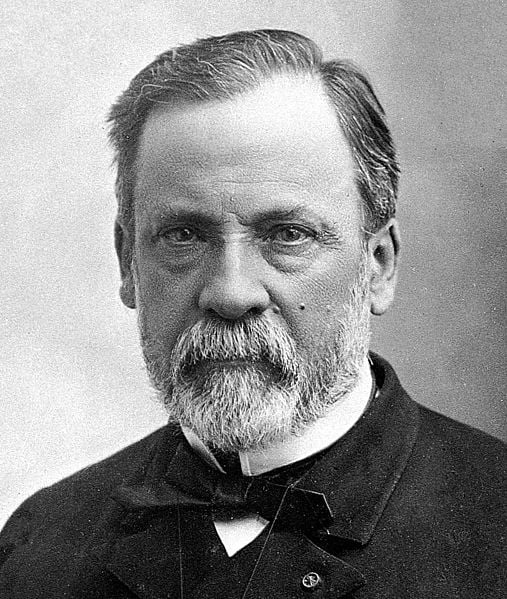
Louis Pasteur was perhaps germophobic. As matter of fact, he never shook hands with anybody. He practiced this self-rule even while meeting royalty and other distinguished persons.
He was too scared of catching any disease. Unfortunately, he lost three of his children to germ-borne diseases.
29. Michael Faraday Turned Down the Offer to Bestow Knighthood

The British Crown offered to bestow knighthood on Michael Faraday, to honor his contribution to physics. But the great scientist turned down the knighthood.
He never made the reason behind this decision clear, but it was surely an unusual happening. There were exceedingly few people who turned down knighthoods in those days and none of them is an accomplished physicist except Faraday.
30. Linus Pauling Believed Vitamin C Can Cure Cancer

Linus Pauling is the only person to receive two unshared Nobel Prize. He kick-started the fields of quantum chemistry and molecular biology, and he was suitably named a genius, but still, he had a quack moment in his life.
In the 1970s, he claimed that large dose of Vitamin C can cure common cold, flu and even cancer. However, his claims had been repeatedly refuted by studies and unbiased research.
Yet, Pauling didn’t give up on his belief in the vitamins and continued to advocate its use.
31. Paul Winchell, a Famous Ventriloquist Who Also Designed Artificial Heart

Paul Winchell designed one of the early models of an artificial heart. It was a mechanical heart and a heart very similar to his (a separate heart invented by Dr. Jarvik) was used in first artificial heart implant.
Paul Winchell, however, is better known for his ventriloquist skills. He was the original voice of Tigger from Winnie the Pooh and Gargamel from the Smurfs.
32. Paul Erdős Had Extraordinary Mathematical Skills Even at the Age of 4
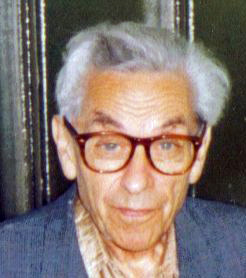
Paul Erdős, with 1500 published papers, is one of the most prolific mathematicians of the last century. Erdős held the view that mathematics must be ‘lived’ or socially practiced.
He possessed no belongings; he even donated all his awards and prizes for worthy causes. Just not for his eccentric behavior, he is now remembered for his genius abilities.
He could calculate how many seconds a person had lived (given his age) in his head when he was just 4 years old. At such an early age, he could even multiply three-digit numbers and discovered negative numbers by himself.
33. Ernest Rutherford, the Best Teacher in the World

What image comes to your mind, when somebody asks you about the best teacher in the world? Is it Ernest Rutherford? If not, then you must consider him once for this entitlement.
He mentored many notable students and a large number of them went on to win Nobel Prize. He is the only teacher with so many Nobel laureates as his students.
Some of his protégés are Edward Victor Appleton, James Chadwick, C. F. Powell, Ernest Walton, Patrick Blackett, Niels Bohr, John Cockcroft, Otto Hahn, Pyotr Kapitsa and Frederick Soddy.
 SHOW COMMENT ()
SHOW COMMENT ()










